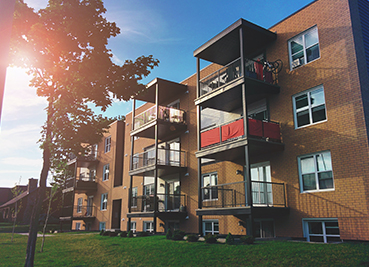
As seen on Denver Business Journal
Millennials make up an even greater share of the housing market since the onset of the Covid-19 pandemic. But are their preferences as a generation reshaping the housing market, or are these largely first-time homebuyers instead having to adapt to what’s available?
A lot of speculation has occurred around how different the millennial generation is or isn’t when it comes to everything from job preferences, household formation and, indeed, how and when they buy a house. Some economists say it used to be widely predicted that millennials would be a generation of renters, which perhaps was one reason for slower new-home construction in the wake of the global financial crisis.
But the National Association of Realtors, in its recently released 2022 Home Buyer and Seller Generational Trends report, found millennials made up 43% of the housing market last year, up from 37% in 2020. Many of those buyers were looking for homes in the suburbs and small towns.
Specifically, 54% of buyers aged 32 to 41, dubbed “older millennials” in NAR’s survey, bought a home in a suburb or subdivision last year.
Jessica Lautz, vice president of demographics and behavioral insights at the NAR, said the report found millennials in the housing market today are largely seeking similar things in a home as past generations.
There are key differences in how the millennial household buys a home, though. This generation is more likely be saddled by student-loan debt, for one. Younger millennials, aged 23 to 31, faced the highest share of student debt among any other generation, with a median amount of $28,000, NAR found. Millennials are also more likely to get financial assistance for a down payment from family members.
They’re also, unsurprisingly, using technology more in the process of purchasing a home. According to the NAR, 65% of younger millennials found the home they ultimately purchased on the internet. A growing number of buyers are even buying a home online.
“They have to up their game,” Lautz said. “People are purchasing homes sight unseen. But also because of the lack of inventory, people want to strategically view homes online and weed them out.”
But for millennials who can’t purchase a home in their desired location, price point or other factors, those households are having to look elsewhere for options.
Proliferation of BTR
Whether driven by millennial preferences or simply because there’s not enough affordable inventory for this generation — or a mix of both — housing diversity has become a more prevalent topic in recent years.
Some millennial households are opting to gain an initial foothold in the suburbs by renting first, but a single-family home or townhouse rather than a typical garden-style apartment.
The build-to-rent sector didn’t gain steam until 2012 or so, the wake of the global financial crisis, when Wall Street firms bought up foreclosed homes and rented them out. Build-to-rent has since become more institutionalized and gained tremendous steam, which economists predict isn’t likely to let up soon.
Brad Hunter, president of housing-market research and advisory firm Hunter Housing Economics, who closely tracks build-to-rent, said he’s projecting a roughly 20% increase in BTR home production this year compared to 2021. Build-to-rent starts totaled about 95,000 last year, according to the firm.
“That still won’t be enough,” Hunter said. “I think we’re going to see steady, strong increases in the number of homes being produced for rent.”
“Missing middle” housing is frequently cited as a key issue in the housing market today. That refers to a lack of housing that isn’t a traditional apartment, nor a large, detached single-family home, but somewhere in between in both size and cost.
Build-to-rent, in addition to for-sale townhouses, duplexes and other attached homes, can be considered part of the missing middle. Millennials are a core demographic flocking to BTR and single-family rentals today, whether by choice or because that’s what’s available amid an ultra-competitive for-sale market. Some baby boomers are also cashing out of large single-family homes and opting to rent a house, Hunter said.
“I think we will see a stratification starting to really take hold, which is already happening,” he said.
He pointed to BTR developers currently building both small and larger rental townhouses, single-family homes with large and small lot sizes, even cottage-style developments, in which a community of detached, small homes, usually on a single plat of land, is built.
Not one-size-fits-all
Much like anything else, the preferences of a generation as large as the U.S. millennial population can’t be painted with a broad brush.
The so-called traditional U.S. household arrangement comprising a married couple with at least one child has declined from nearly 70% of the population in 1968 to 29% in 2019, a Brookings Institution December 2020 report found, citing Census data. Other types of household arrangements — individuals living with other family members or roommates, or a person living alone — have during the same time period increased, although more modestly.
Despite those shifts in household, production of the largest homes — four or more bedrooms — has grown as a share of inventory, up to 22.9% in 2017, Brookings found. Meanwhile, the number of new homes with smaller configurations, typically one bedroom, has largely stagnated since the late 1990s, making up 11.6% of home production in 2017. Three-bedroom homes were the most popular, with 40.8% of all production that year.
Tracy Loh, a fellow with the Anne T. and Robert M. Bass Center for Transformative Placemaking at Brookings, who authored the report, said household formation has changed so much in the past several decades. But new housing continues to look, largely, the same as it did when the nuclear family was far and away the dominant household type.
“There’s this mismatch between the demographics and our inventory,” Loh said.
The NAR report shows demonstrated demand for suburban single-family homes among millennial buyers but, Loh said, household arrangements today are not as uniform as they were in the mid-20th century. Many aren’t able to afford to buy, while others are actively choosing to not purchase a home.
Therefore, she said, current housing inventory does not always reflect needs and desires of, for example, childless couples, those living alone, one-parent households or several generations of a family living under one roof.
Loh said regulations, particularly zoning laws, have stymied the ability for the market to respond quickly to changing demographic needs and desires, headlined by millennials. That means while there’s more diversity of households today, there’s largely only legacy housing inventory to choose from — whether rental or for-sale.
“People have to have a place to live,” Loh said. “Shelter is a necessity. What people do is, they adapt the existing inventory and find creative ways to make it work for them.”
Technology, such as modular construction, could help build more diverse housing quicker and more affordably. But, Loh continued, changes to zoning laws — typically in the jurisdictions of cities, towns or counties — are also needed to allow for new and different types of housing.
Many cities today are reexamining zoning laws as political pressure mounts to find ways to produce and preserve more affordable, or missing middle, housing. But there are more than 3,000 counties across the U.S., which means more than 3,000 approaches and debates around the way to achieve that, Loh said.




